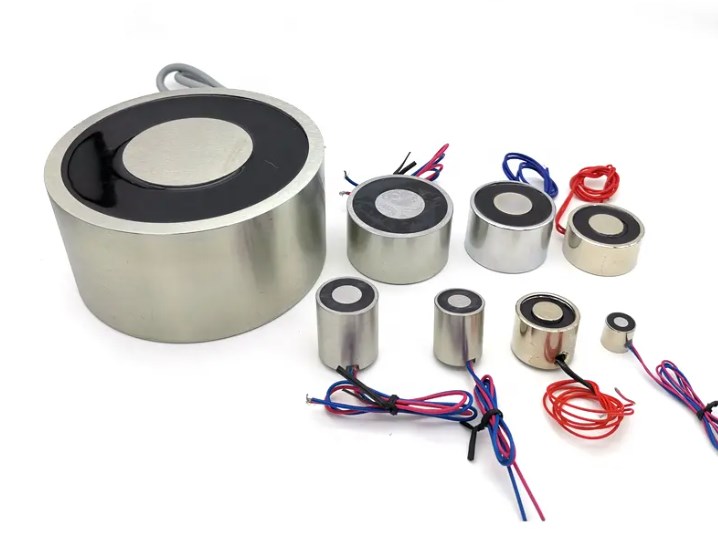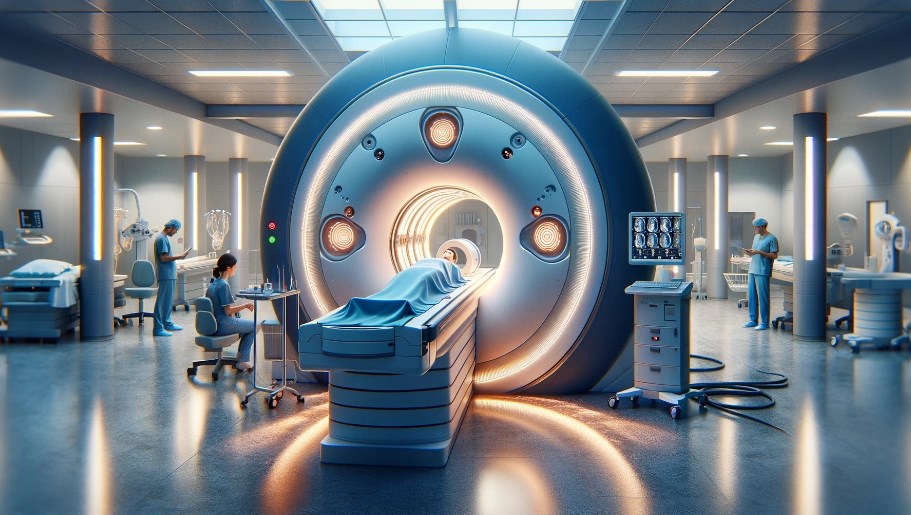Electromagnets in Everyday Life: From Healthcare to Transportation
In a world where technology and innovation continually redefine the boundaries of possibility, electromagnets play a pivotal yet often underappreciated role. Far from being confined to the realms of high-tech laboratories or industrial applications, electromagnets are integral to many aspects of our daily lives, from the healthcare we receive to the way we travel. This article explores the ubiquitous yet often invisible presence of electromagnets in various everyday applications. 

1. Magnetic Resonance Imaging (MRI)
- Function: MRI machines use powerful electromagnets to generate strong magnetic fields.
- Application: These magnetic fields align the protons in the body, and radiofrequency pulses are then used to disturb this alignment. When the protons return to their original state, they emit signals that are converted into detailed images of the body's internal structures.
- Importance: MRI is invaluable for diagnosing a range of conditions, including brain tumors, spinal cord injuries, heart diseases, and musculoskeletal disorders, without exposing patients to ionizing radiation.
2. Radiation Therapy
- Linear Accelerators: In radiation therapy, particularly in linear accelerators, electromagnets are used to direct high-energy x-rays or electrons precisely at cancerous tumors.
- Function: The electromagnets guide the charged particles along a specific path and focus the radiation beam on the target area, minimizing damage to surrounding healthy tissues.
3. Surgical Instruments
- Electrosurgery: Electromagnetic technology is employed in electrosurgical devices for cutting, coagulating, or cauterizing tissue.
- Magnetic Navigation Systems: In minimally invasive surgeries, magnetic navigation systems use electromagnets to guide instruments or catheters through the body with precision.
4. Magnetic Stimulation
- Transcranial Magnetic Stimulation (TMS): This non-invasive procedure uses electromagnets placed on the scalp to create brief magnetic pulses.
- Application: TMS is used to stimulate small regions of the brain, which can treat depression, neurological disorders, and certain types of pain.
5. Drug Delivery and Lab-on-a-Chip Devices
- Targeted Drug Delivery: Research is ongoing into using electromagnets for targeted drug delivery systems, where magnetic nanoparticles are guided to specific sites in the body.
- Lab-on-a-Chip Devices: Electromagnetic fields are used to manipulate tiny samples of blood or other fluids in diagnostic devices, allowing for rapid on-site testing.
6. Magnetic Resonance Therapy
- Pulsed Electromagnetic Field (PEMF) Therapy: Used for bone healing, especially in cases where bones fail to heal after surgery or injury. PEMF devices use electromagnetic fields to stimulate bone growth.
7. Hospital Infrastructure
- MRI-Compatible Equipment: Electromagnets are integral in creating MRI-compatible equipment, such as wheelchairs and gurneys, that do not interfere with the MRI's magnetic field.

1. Magnetic Levitation (Maglev) Trains
- Principle: Maglev trains use electromagnets for both levitation and propulsion, eliminating the need for traditional wheels, axles, and bearings.
- Levitation: Electromagnets are used to create a magnetic field strong enough to lift the train off its track, reducing friction and wear.
- Propulsion: Electromagnets are also employed in propulsion systems, where alternating magnetic fields move the train forward at high speeds. This system enables maglev trains to achieve speeds significantly higher than conventional trains.
- Advantages: Maglev technology results in faster, quieter, and smoother rides compared to conventional rail transport.
2. Electric and Hybrid Vehicles
- Electric Motors: Electromagnets are at the heart of electric and hybrid vehicle motors. When electric current passes through these electromagnets, it creates a magnetic field that interacts with permanent magnets, causing the motor's rotor to turn and drive the vehicle.
- Regenerative Braking: In hybrid and electric vehicles, regenerative braking systems use electromagnets to convert kinetic energy back into electrical energy, which is then stored in the vehicle’s battery for later use.
3. Automated People Movers and Trams
- Urban Transportation: Electromagnets are used in some automated people mover systems and trams for propulsion. These systems, often found in airports, amusement parks, or urban centers, use a similar principle to maglev trains but typically operate at lower speeds.
4. Cable Cars and Funiculars
- Braking Systems: In cable-driven transportation like cable cars and funicular railways, electromagnets are often used in emergency braking systems to ensure safety. When activated, they provide a rapid and controlled stop.
5. Cargo and Freight Transportation
- Cranes and Lifting: Electromagnets are widely used in the handling of ferromagnetic materials in ports, scrapyards, and construction sites. Electromagnetic cranes can lift and move heavy metal objects, streamlining the loading and unloading of goods.
6. Future Innovations
- Hyperloop: Proposed systems like the Hyperloop contemplate the use of electromagnetic propulsion in near-vacuum tubes to transport pods at very high speeds, offering the potential for a new era in long-distance travel.
Revolutionizing Transportation: Maglev Trains
Electromagnets have also transformed the transportation sector, most notably through magnetic levitation (maglev) trains. These high-speed trains use a series of electromagnets for both levitation and propulsion. By generating controlled magnetic fields, maglev trains are lifted off their tracks, reducing friction and enabling speeds that can surpass traditional rail transport. This not only results in a smoother and quieter ride but also significantly cuts down travel time, exemplifying how electromagnets can enhance efficiency and comfort in public transportation.
Everyday Convenience: Household Appliances
In the realm of household appliances, electromagnets are silent workhorses. Inside electric kettles, toasters, and hair dryers, electromagnets are used to generate heat. In washing machines, they power the electric motors that spin the drum. Even in the simple act of pressing a doorbell, an electromagnet is at work, creating the magnetic field that pulls the bell's hammer. These applications might seem mundane, but they are perfect examples of how electromagnets make our daily tasks easier and more efficient.
Communication and Computing: Data Storage and Processing
The digital world, too, owes much to electromagnetics. Hard drives in computers use electromagnets to read and write data. The very foundation of modern computing and data storage technologies hinges on the ability of electromagnets to manipulate tiny magnetic fields, enabling the vast and rapid storage and processing of information that we rely on every day.
Entertainment and Leisure: Speakers and Microphones
Electromagnets are also pivotal in the field of entertainment. Speakers and microphones, whether in smartphones, laptops, or public address systems, operate using electromagnets. In speakers, electromagnets interact with permanent magnets to convert electrical signals into sound waves. In microphones, this process is reversed, turning sound into electrical signals.
Conclusion
Electromagnets are an indispensable part of modern life, seamlessly integrated into numerous facets of our daily activities. From advanced medical imaging to high-speed transportation, and from the mundane tasks of household chores to the sophisticated realms of data processing and entertainment, electromagnets prove to be versatile and vital components. Their continued development and application hold great promise for further advancements, making life not only more convenient but also opening doors to new technological frontiers. As we navigate through our day, it's worth remembering the silent yet powerful role of electromagnets in shaping our world.














